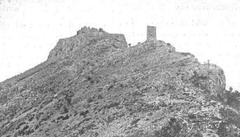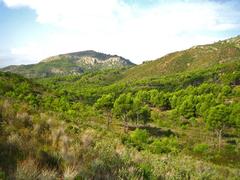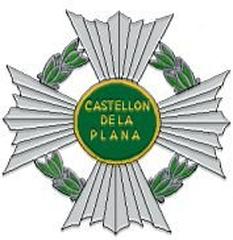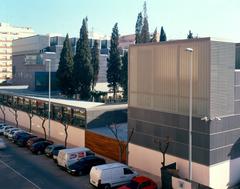Estàtua Del Rei En Jaume: Visiting Hours, Tickets, and Historical Sites Guide in Castelló de la Plana
Date: 14/06/2025
Introduction
Castelló de la Plana, in Spain’s Valencian Community, is a city renowned for its medieval heritage and vibrant local culture. At the heart of its historic identity stands the Estàtua Del Rei En Jaume, a monumental bronze sculpture dedicated to King James I of Aragon (Jaume I el Conqueridor). Erected as a tribute to the monarch who shaped the city’s destiny, this statue is not only an artistic landmark but also a living symbol of Castelló’s origins and enduring civic pride.
This detailed guide covers the statue’s historical significance, its artistic and cultural value, practical visitor information such as visiting hours and ticketing, accessibility, and highlights of nearby attractions. Whether you are a history enthusiast, art lover, or traveler, this article will help you make the most of your visit to Castelló de la Plana and its iconic monument.
For further historical context and travel tips, consult resources including Rutas Jaume I, Audiala, and the Castelló Tourism website.
Contents
- Historical Background
- Artistic Features of the Statue
- Cultural and Civic Significance
- Visitor Information (Hours, Tickets, Accessibility)
- Nearby Attractions and Travel Tips
- Festivals, Events, and Community Life
- FAQs
- Conclusion
- Sources
Historical Background
Jaume I “El Conqueridor”: Foundation of Castelló de la Plana
King James I of Aragon (1208–1276), known as Jaume I el Conqueridor, was instrumental in the Christian reconquest of the Iberian Peninsula, including the conquest of Valencia in 1238. Castelló de la Plana’s history is deeply intertwined with his reign: after capturing the strategic Castell Vell fortress in 1233, he granted the city its foundational charter, relocating its population from the nearby hills to the fertile plain in 1251 (Rutas Jaume I).
This momentous act is commemorated not only by the statue but also by the annual Magdalena festival, which celebrates the city’s foundation and its connection to Jaume I’s legacy (Audiala).
Artistic Features of the Estàtua Del Rei En Jaume
Creation and Style
- Sculptor: Josep Viciano i Martí, a respected local artist, created the statue in 1896 (ca.wikipedia.org).
- Material and Size: Made of bronze, the statue stands 2.6 meters tall, ensuring durability and a striking visual presence (rutasjaumei.com).
- Pose and Symbolism: Unlike many equestrian representations, Jaume I here is depicted upright, holding a scroll in his left hand (symbolizing the city’s foundational charter, the “Carta Pobla”) and resting his right hand on a sheathed sword, signifying both authority and peace.
- Attire and Emblems: The statue features detailed 13th-century royal attire, including the heraldic symbols of the Crown of Aragon and a helmet topped with a winged dragon—emblems of vigilance and power.
Urban Context
The statue is centrally located on Avinguda Rei En Jaume, a prominent avenue that hosts markets, festivals, and civic events. Its accessibility and visibility make it a popular meeting point and a key feature of the city’s urban landscape (rutasjaumei.com).
Cultural and Civic Significance
The Estàtua Del Rei En Jaume serves as a touchstone for local identity:
- Community Symbol: It is a focal point during the Magdalena festival and other civic events, decorated with flowers and banners to mark celebrations (Audiala).
- Educational Value: Schools and guides use the statue to teach about Castelló’s medieval origins and Jaume I’s impact.
- Civic Gatherings: The monument is a backdrop for public speeches, parades, and official ceremonies, especially on anniversaries related to the city’s founding.
Visitor Information
Visiting Hours
- The Estàtua Del Rei En Jaume is accessible 24/7, as it is located outdoors in a public space. There are no restricted visiting hours.
Tickets and Fees
- No tickets or reservations are required; visiting the statue is entirely free.
Accessibility
- The avenue is flat and pedestrian-friendly, making the monument wheelchair accessible. Public transportation and nearby parking are available for visitors.
Photography
- Photography is encouraged. For the best results, visit during the golden hour (sunrise or sunset) or during festival decorations.
Guided Tours
- Many walking tours of Castelló de la Plana include the statue as a highlight. Inquire at the local tourist office or book online for in-depth historical context (Castelló Tourism).
Nearby Attractions and Travel Tips
- Concatedral de Santa María: Gothic cathedral, open Mon-Sat 10:00–14:00, 16:00–19:00; Sun 10:00–14:30. Entry: ~€3 (children under 12 free).
- El Fadrí Bell Tower: Climb for panoramic city views.
- Plaza Mayor: Main square with historic architecture and cafés.
- Mercado Central: Local market for fresh produce and regional specialties.
- Castell Vell and Ermita de la Magdalena: The original hilltop fortress; entry is free, accessible year-round. Some paths may be challenging for those with mobility issues.
- Ribalta Park: A green oasis nearby.
Tip: For a rich experience, align your visit with the Magdalena festival (third Sunday of Lent), when the city comes alive with processions and cultural events.
Festivals, Events, and Community Life
The Magdalena festival is Castelló’s most important celebration, commemorating the city’s relocation and foundation. The Estàtua Del Rei En Jaume becomes a focal point for processions, flower offerings, and public gatherings during this period (Audiala).
Frequently Asked Questions (FAQ)
What are the visiting hours?
The statue is accessible at all times, day or night.
Is there an admission fee?
No, visiting the statue is free.
Is the site wheelchair accessible?
Yes, the area is flat and accessible.
Are guided tours available?
Yes, most city tours include the statue. Check with the tourist office for schedules.
Can I take photos?
Yes, photography is permitted and encouraged.
Are there nearby attractions?
Yes, within walking distance you’ll find the cathedral, El Fadrí, Plaza Mayor, markets, and more.
Conclusion
The Estàtua Del Rei En Jaume is both a historical monument and a vibrant symbol of Castelló de la Plana’s community spirit. It honors the legacy of King James I and the city’s medieval roots, while serving as a centerpiece for festivals, education, and public life. Easily accessible and free to visit, the statue is an essential stop for anyone exploring Castelló’s rich cultural tapestry. Enhance your visit by joining a guided tour, timing your trip with the Magdalena festivities, and exploring nearby historical sites.
For more tips and updates, download the Audiala app or consult the official tourism portals.
Sources and Further Reading
- Rutas Jaume I
- Estàtua del Rei En Jaume (ca.wikipedia.org)
- Castelló Tourism Official Website
- Audiala
- Spain Info – Castelló de la Plana
- Estatua de Jaume I (rutasjaumei.com)
- Nomads Travel Guide
- Wanderlog – Top things to do in Castelló




